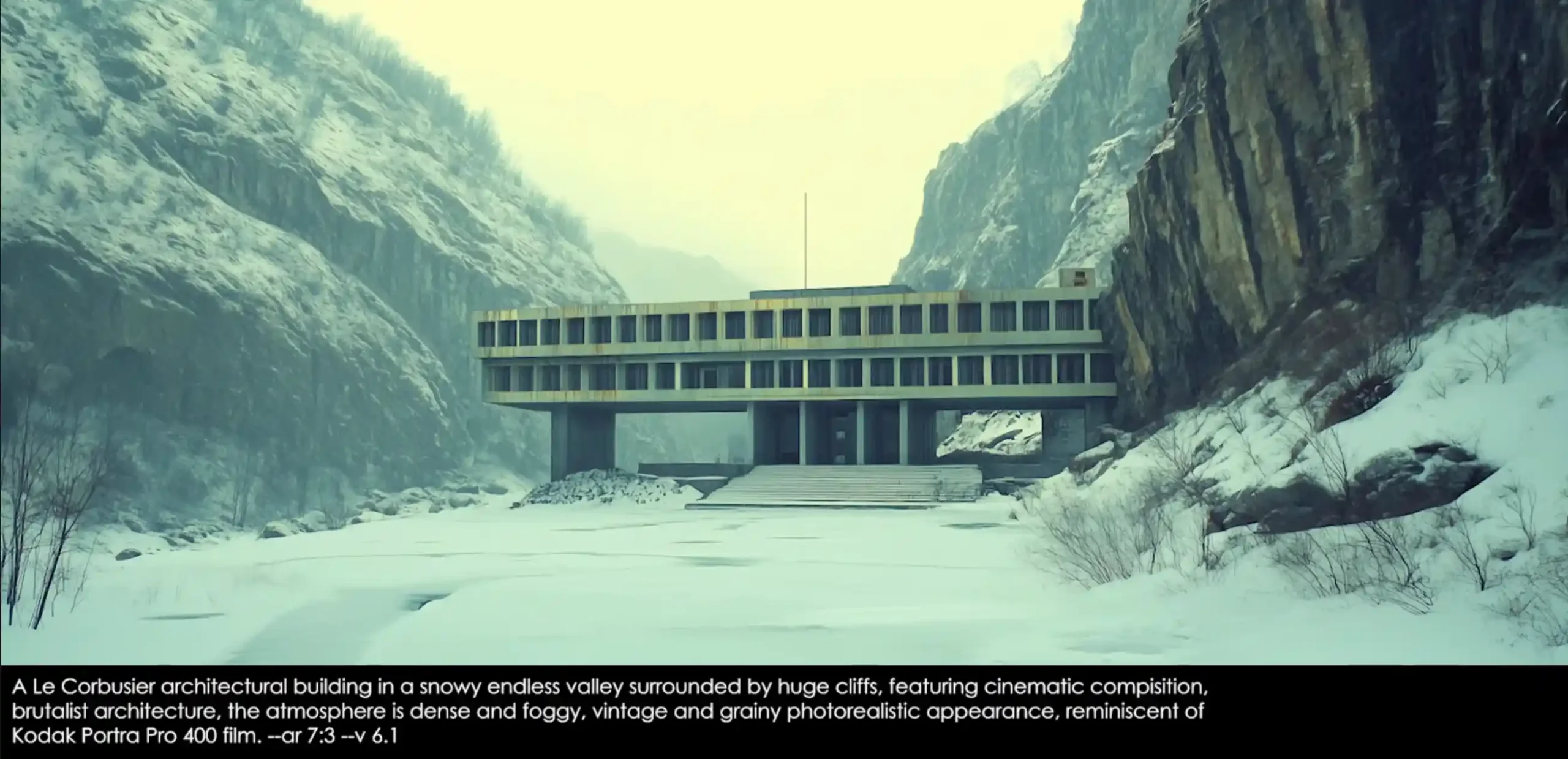In this article, I’ll take you through a deeper exploration of MidJourney AI rendering, focusing on creating minimal, modernistic, Soviet-inspired images with a vintage camera style. Here, I’ll also expand on that but with a more specialised approach for creating stunning vintage-modernist visuals.
MidJourney and My Prompting Structure
You’re likely familiar with my 2-4-2 prompting structure. This is a simple yet effective method where the first part of the prompt describes the objects, camera view, and the scene.
For example:
“A Lamborghini parked in an ancient Greek theater in winter, against the backdrop of a snow-covered mountain.”
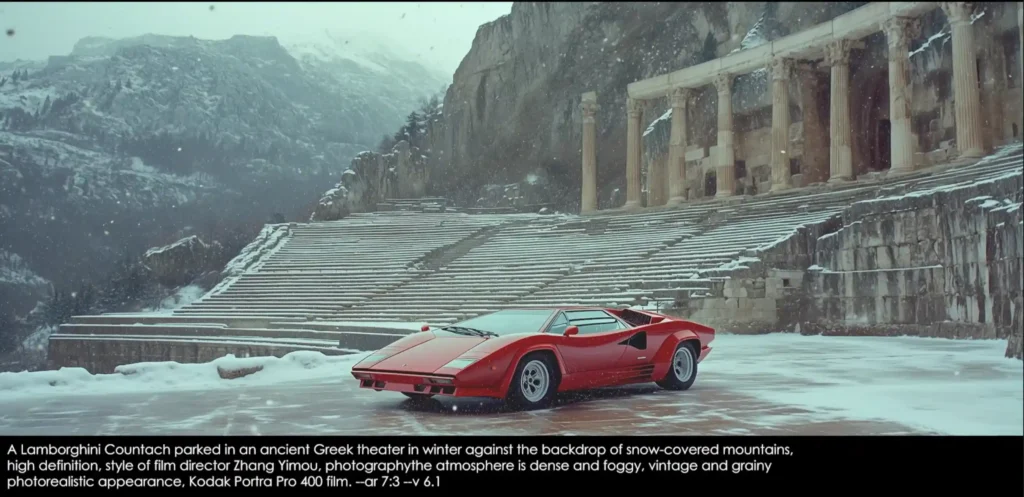
This forms the foundation of many of my renders, and for this series, I’ve slightly expanded some of the prompts.
That said, I still try to keep the prompt as short and concise as possible because shorter prompts often lead to better outcomes.
Key Elements in Prompting
For the first few images in this guide, I used prompts to capture a vintage, grainy, Soviet-modernist look. One of the key elements I added to achieve this aesthetic is:
- Kodak Portra Pro 400 film: This element gave all the images a consistent vintage camera feel.
Additionally, creating a dense and foggy atmosphere plays a crucial role in producing a moody, cinematic effect, which is vital when you want to invoke the powerful, atmospheric feel of Soviet-modernist buildings.
Soviet Modernist Buildings
When crafting the Soviet-modernist images, using phrases like “dense and foggy atmosphere” significantly enhances the mood and gives a strong, evocative visual.
If you aim for that distinctive Soviet vibe, consider including the following elements in your prompt:
- Snowy, endless valleys surrounded by cliffs
- Backdrop of snow-covered mountains
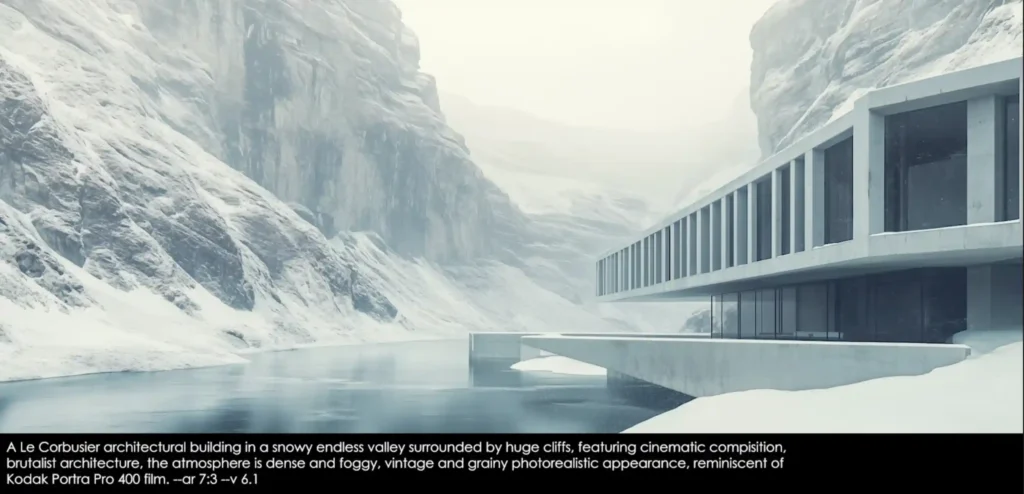
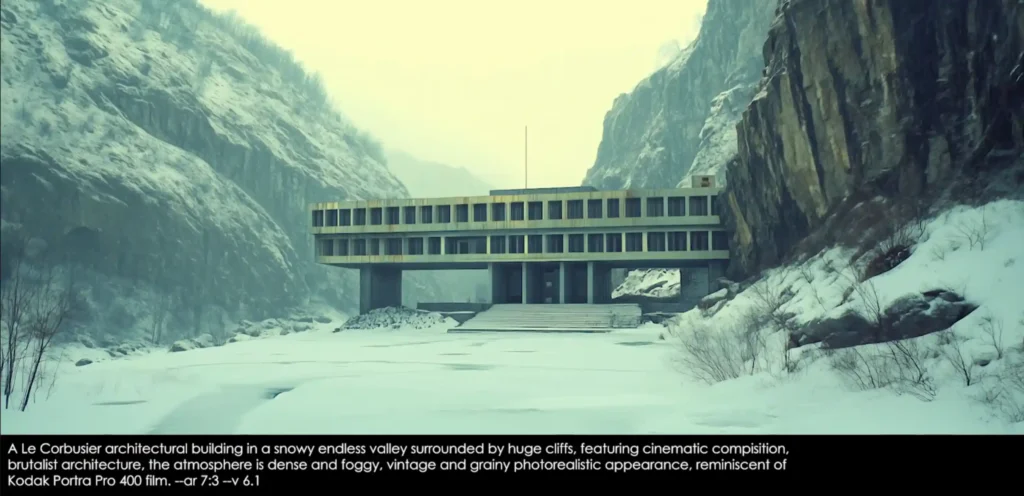
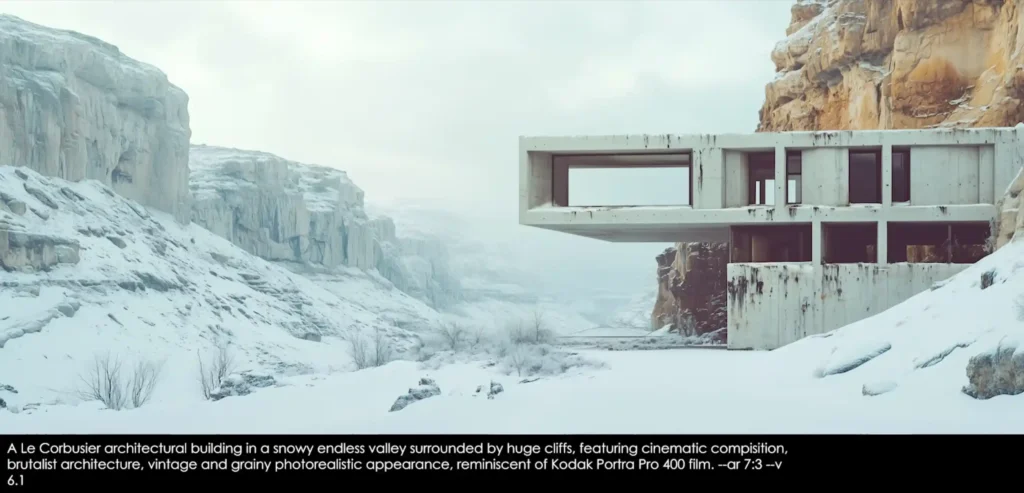
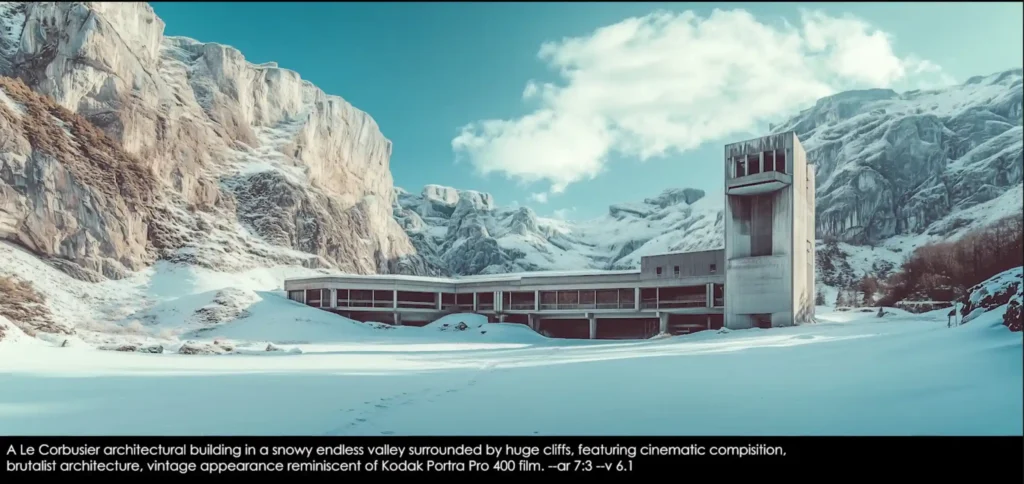
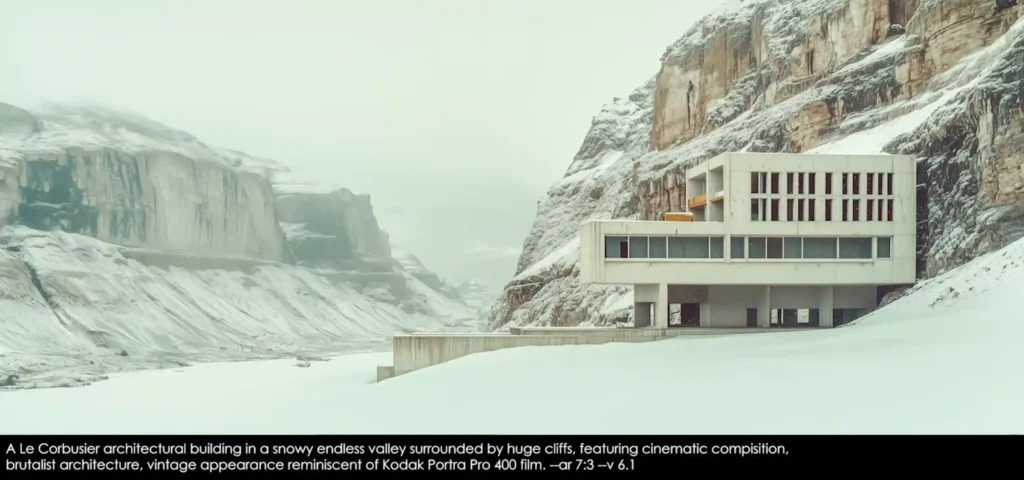
These descriptions create a wide-open, mountainous landscape that feels expansive and cold.
Brutalist Architecture
To capture that iconic Soviet brutalist look, you can reference specific architectural styles. For example:
Brutalist architecture:
This term alone is enough to produce those striking, heavy structures reminiscent of Soviet-era buildings.
Notable Architects:
You can incorporate names like Le Corbusier or Mies van der Rohe into your prompt to channel their postmodernist influence. This will guide MidJourney to generate structures inspired by these renowned architects.
Including a cinematic composition and a wide 7:3 aspect ratio makes the scene feel like a wide-screen movie shot, adding dramatic flair to the composition.
Incorporating Film Photography Style
Another effective prompt element is to reference the style of a film director.
For example:
“Style of film director Jiang Wen”
I didn’t know much about this director at first, but their film style proved to be highly effective in capturing a specific cinematic feel.
If there’s a particular film style you admire, research a director known for it and incorporate their name into your prompts.
Additionally, the snow-covered mountains are a powerful tool for creating stark, cold landscapes that feel epic and timeless.
Rocky Desert: Changing the Setting
Once I felt satisfied with the snowy mountains and foggy atmosphere, I wanted to switch things up.
I replaced the snowy mountains with a rocky desert, while maintaining the same moody, atmospheric vibe.
For this variation, I only changed a few key words in the prompt:
“Rocky desert,” replacing the snowy mountains.
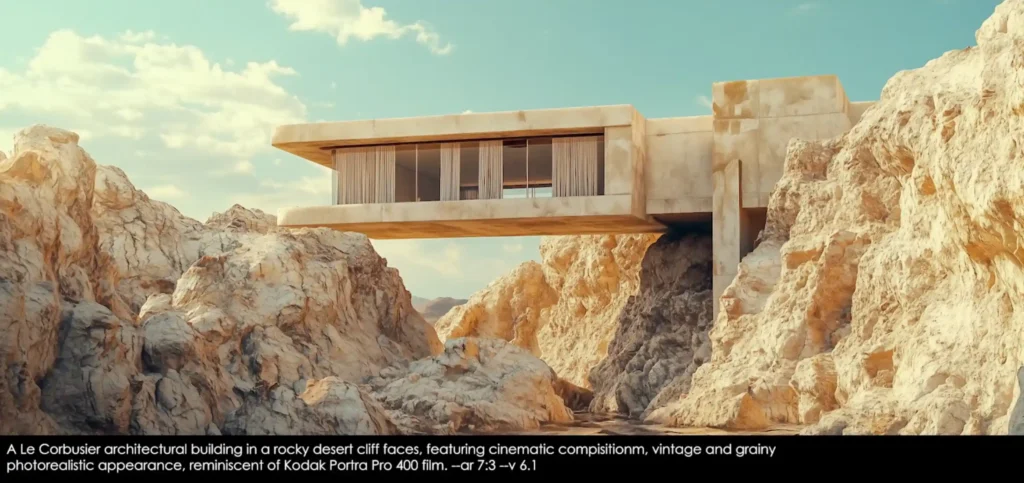
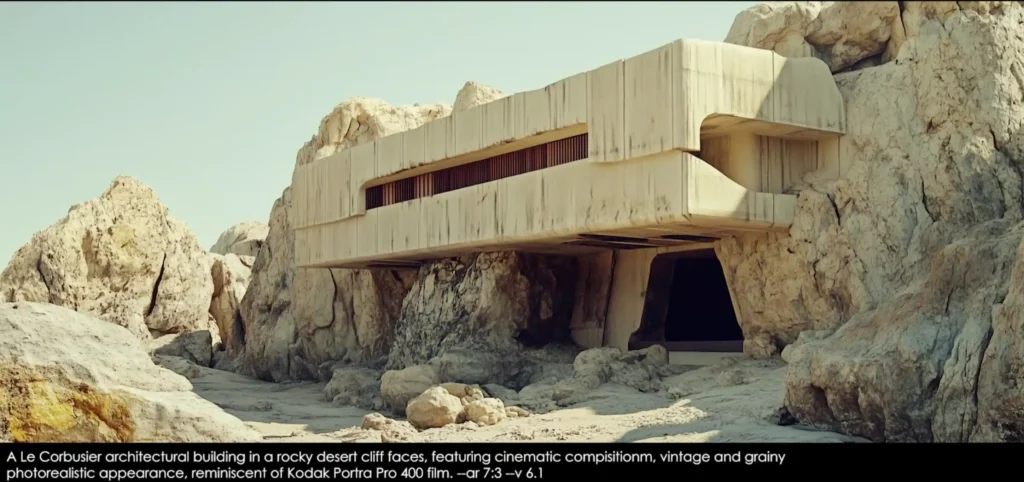
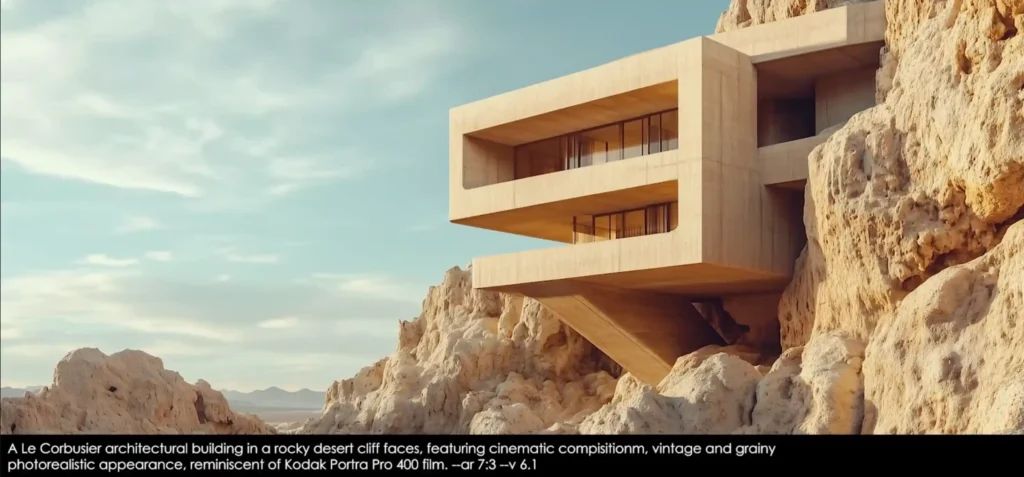
This small tweak resulted in an entirely different look that could almost pass for a scene from a Star Wars movie.
The atmosphere stayed consistent, but the desert setting brought a whole new layer to the visuals.
Upscaling for Higher Resolution
Some of the images were upscaled to achieve higher resolution, making the scenes even more crisp and photorealistic. Upscaling enhances the level of detail and sharpness, which can be crucial for achieving a professional, polished look.
Grassy Tundra: Another Shift in Scenery
After experimenting with both snowy and desert landscapes, I moved on to a grassy tundra setting. For these images, I described:
“An old church building situated on the edge of a rocky tundra cliff.”
To maintain that expansive feel, I used the term “huge valley” or “endless valley”, which is excellent for creating vast, wide-open scenes. I also added Nordic mountains in the background to give a sense of scale and isolation.

As with the previous images, I kept the same key elements such as cinematic composition, vintage graininess, and the Kodak Portra Pro 400 film prompt.
This consistency ensured the visuals remained cohesive while shifting between different terrains.
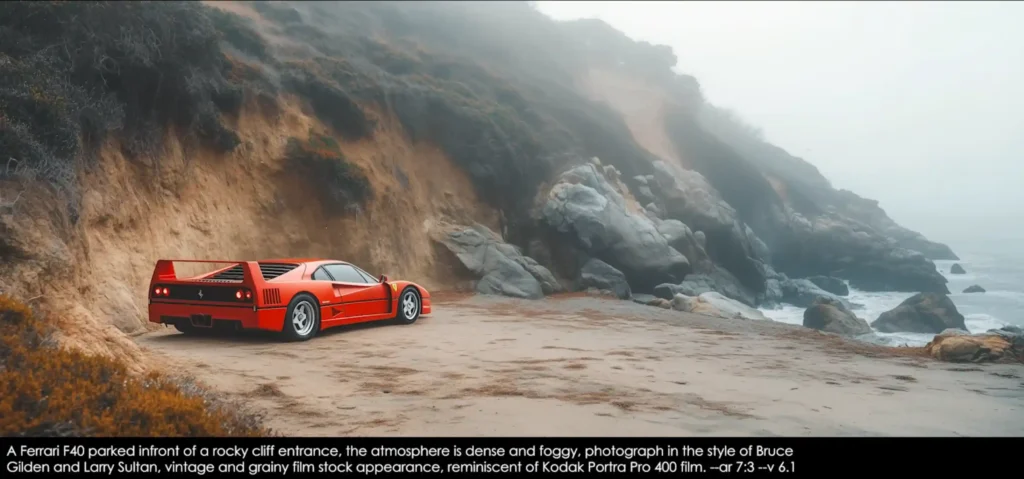
Advanced Prompt Techniques for Better Results
One of the most important tips I can offer is to keep your prompts short. This simplicity allows MidJourney to focus on the core elements without becoming overwhelmed by too many details.
I often run multiple variations of the same prompt to fine-tune the results.
Don’t be afraid to run it over and over until you find something that feels just right. In my experience, some of the best outcomes come from experimenting with various iterations of a basic prompt.
Aspect Ratios for Different Uses
Another trick is to change the aspect ratio to suit your needs. For example, a 9:16 ratio is perfect for phone lock screens or mobile backgrounds.
I find that this ratio makes the composition ideal for vertical formats like phones, and you can easily create personalized lock screens this way.
Conclusion + Bonus Tip
I hope the prompts and techniques I’ve shared help you explore MidJourney in new and exciting ways. By keeping your prompts short and focused, you can start creating images that are more niche, like vintage modernism, and expand your creative horizons.
